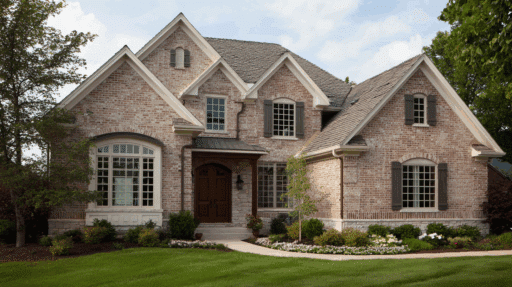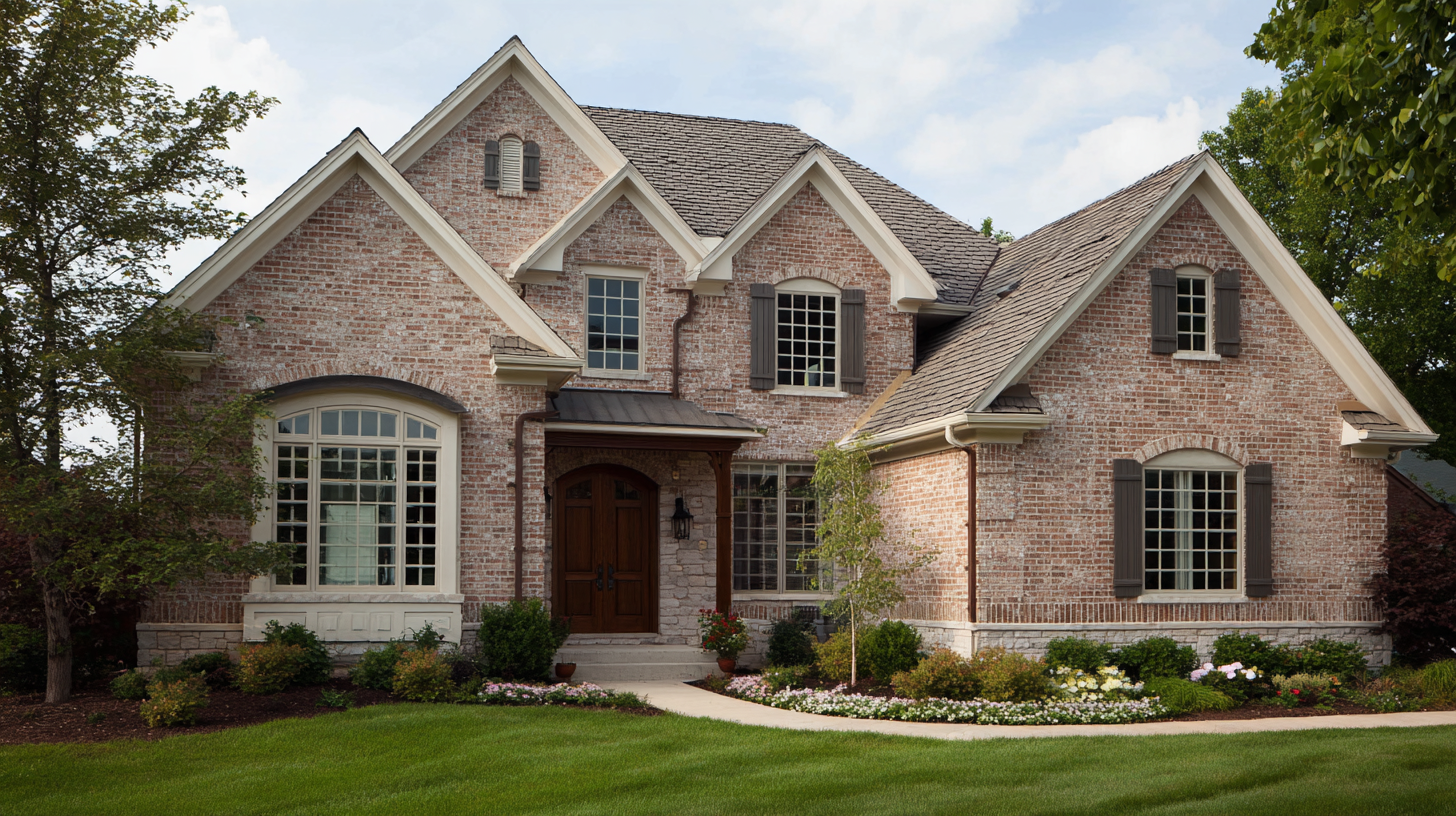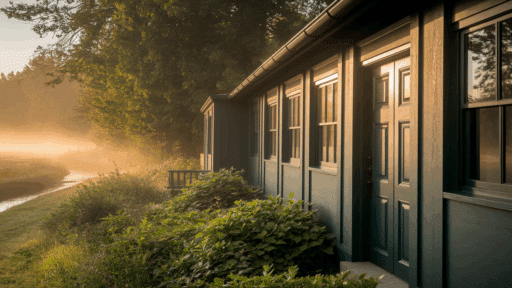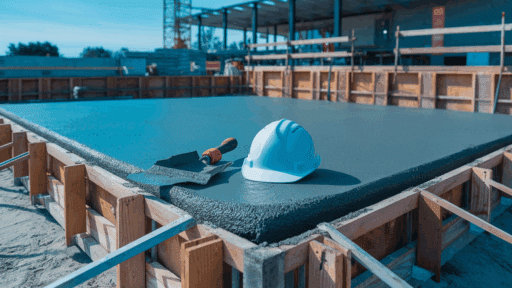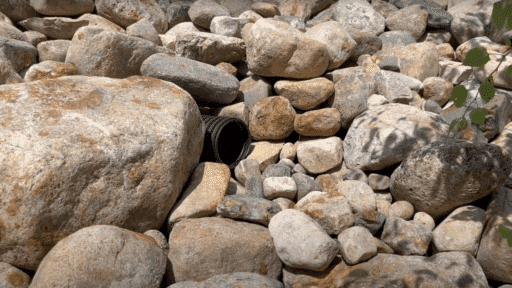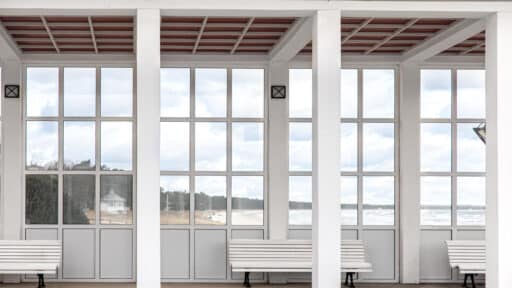Siding is like your home’s protective jacket, working just like your coat shields you from bad weather.
It keeps your house safe from sun damage, heavy rain, strong winds, and extreme temperatures, while also making your home look beautiful and welcoming to everyone who sees it.
In this helpful blog, we’ll walk you through the different types of siding for homes today, explaining what’s great and not-so-great about each option.
Share the crucial factors to consider when selecting the perfect siding for your home.
What is House Siding and What Matters Most?
House siding is your home’s protective outer shell, shielding the structure from weather, providing insulation, and creating the first impression of your home.
Think of it as your house’s armor, working constantly to keep you comfortable inside while protecting against rain, wind, snow, and pests.
Beyond protection, siding has a significant impact on your home’s curb appeal and property value, making it one of the most important exterior features of your house.
Primary Factors to Consider When Choosing House Siding
- Durability: Choose materials that handle your local weather for 20-50+ years without cracking or fading.
- Cost Considerations: Consider total ownership costs, not just upfront price – cheaper options often need expensive maintenance.
- Maintenance Requirements: Be realistic about upkeep time – vinyl needs occasional cleaning, wood requires regular painting.
- Climate Compatibility: Match siding to your weather – sun needs fade resistance, humidity needs moisture protection, and cold needs freeze resistance.
Types of Siding for Homes
Your home’s exterior needs protection from the weather, and choosing the right siding material makes a big difference.
Here are the most popular siding options available today, each with its own benefits and costs to consider.
1. Vinyl Siding
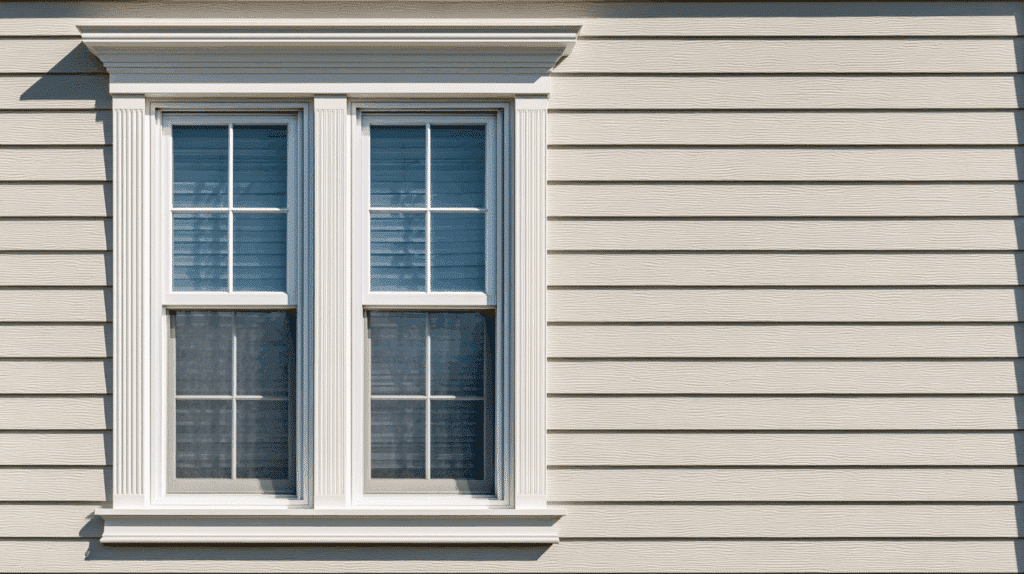
Vinyl siding is made from PVC plastic and is the most popular choice for many homeowners due to its affordability and ease of installation.
It comes in horizontal or vertical planks that snap together, making it a favorite for DIY projects.
Pros:
- Super affordable and easy to install yourself.
- Comes in tons of colors and won’t rot, warp, or need painting.
- Lightweight and handles most weather well.
- Never needs staining or sealing.
Cons:
- It can crack in freezing temperatures, may fade over time, and has a synthetic appearance.
- It won’t add much value to your home.
- Can melt near grills or fire sources.
Cost: $2-5 per sq. foot (Approx)
Maintenance Tips: Hose down 1-2 times yearly with a soft brush for stubborn spots.
2. Wood Siding
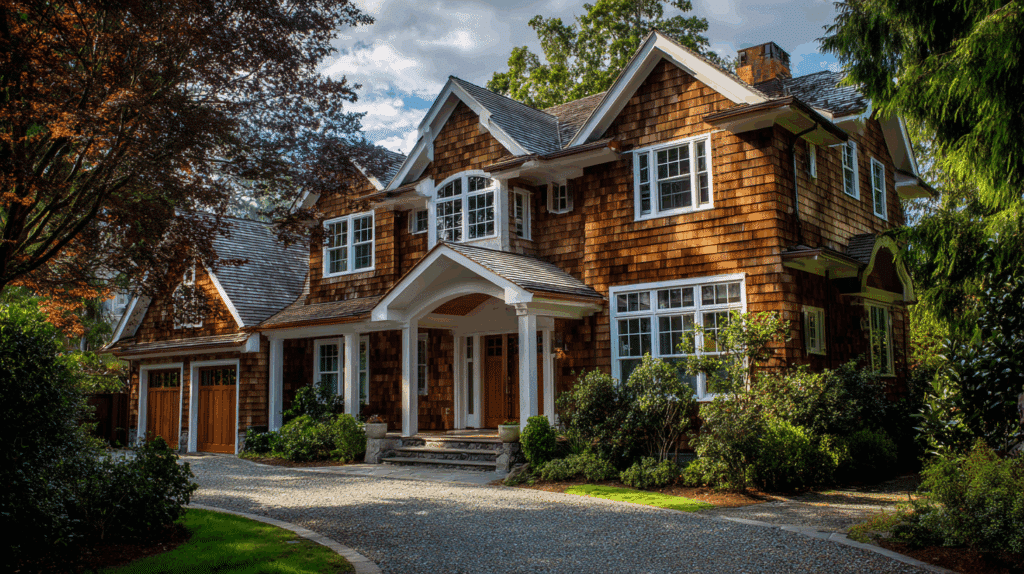
Traditional wood siding offers natural beauty and authentic character that many homeowners love, available in various species with different grain patterns and colors.
Cedar naturally resists insects, while redwood offers beautiful, rich tones.
Pros:
- Nothing beats the natural beauty and authentic look.
- Eco-friendly, paintable in any color, and adds real character to your home.
- Excellent insulation properties and can last over 50 years with proper care.
Cons:
- Needs painting or staining every 3-7 years.
- It can rot, warp, or attract insects if not appropriately maintained.
- Higher fire risk than other materials.
Cost: $3-8 per sq. foot (Approx)
Maintenance Tips: Annual inspection, paint/stain every 3-7 years or clean with mild soap.
3. Fiber Cement Siding
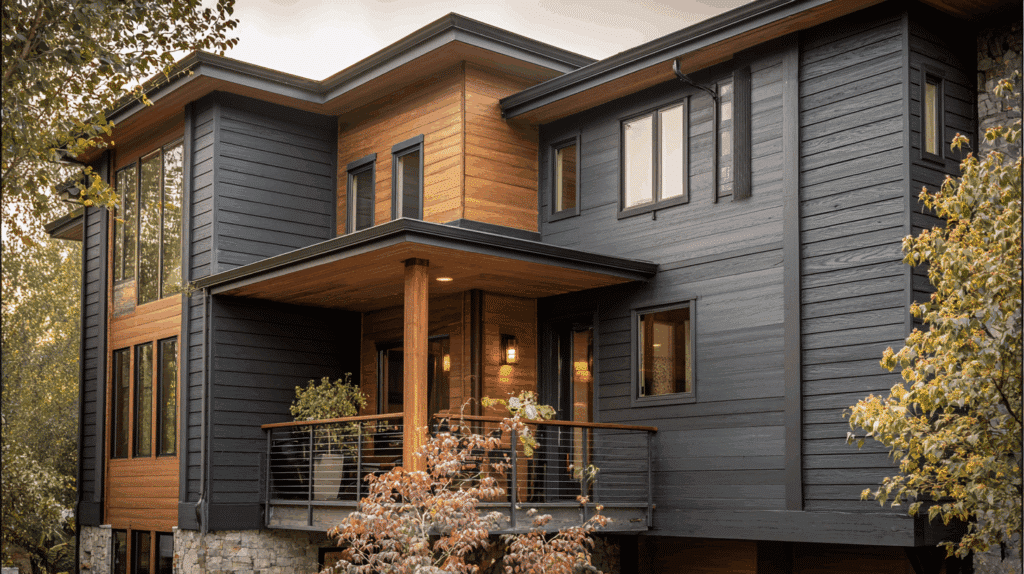
Made from cement, sand, and cellulose fibers, this engineered material mimics the appearance of wood while offering superior durability and weather resistance.
It’s becoming increasingly popular for its longevity and realistic wood-like textures.
Pros:
- Looks like wood but won’t rot, burn, or attract pests.
- Extremely durable and handles harsh weather beautifully.
- It can be painted any color and holds paint well for 10-15 years.
Cons:
- Heavy and requires professional installation.
- More expensive upfront than vinyl.
- Cutting creates silica dust, requiring special precautions.
Cost: $4-7 per sq. foot (Approx)
Maintenance Tips: Wash annually and repaint every 10-15 years.
4. Engineered Wood Siding
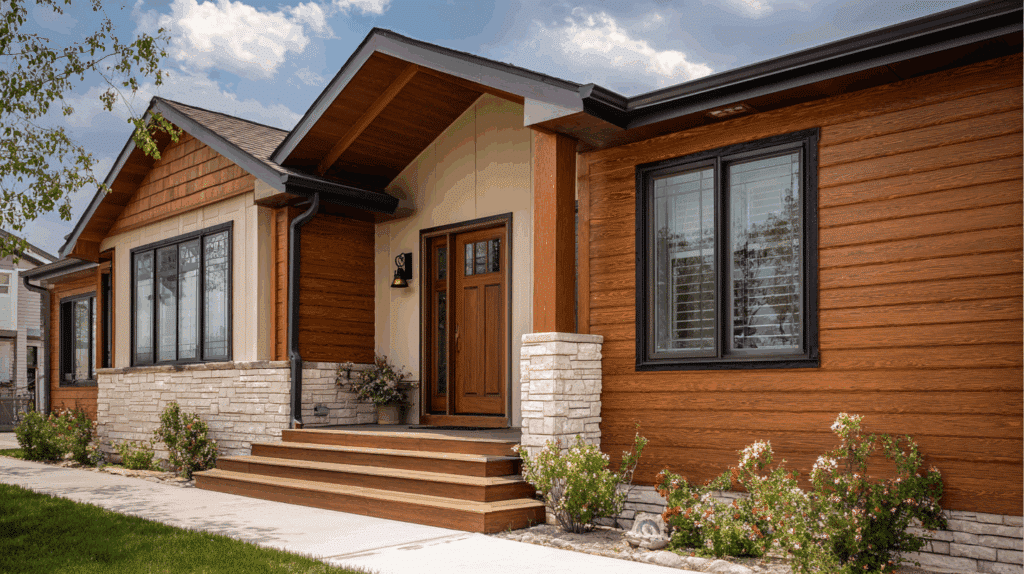
Combines wood fibers with resins and binders to create a product that resembles natural wood, offering enhanced moisture and pest resistance for house siding.
It’s designed to provide the beauty of wood without the traditional maintenance headaches.
Pros:
- Provides a wood-like appearance with enhanced moisture resistance.
- Less maintenance than real wood, but still paintable.
- More eco-friendly than vinyl.
Cons:
- Water issues can still occur if the seal fails.
- More expensive than vinyl, but it doesn’t last as long as fiber cement.
- It may fade over time.
Cost: $3.50-6 per sq. foot (Approx)
Maintenance Tips: Clean annually, reseal every 5-8 years.
5. Metal Siding
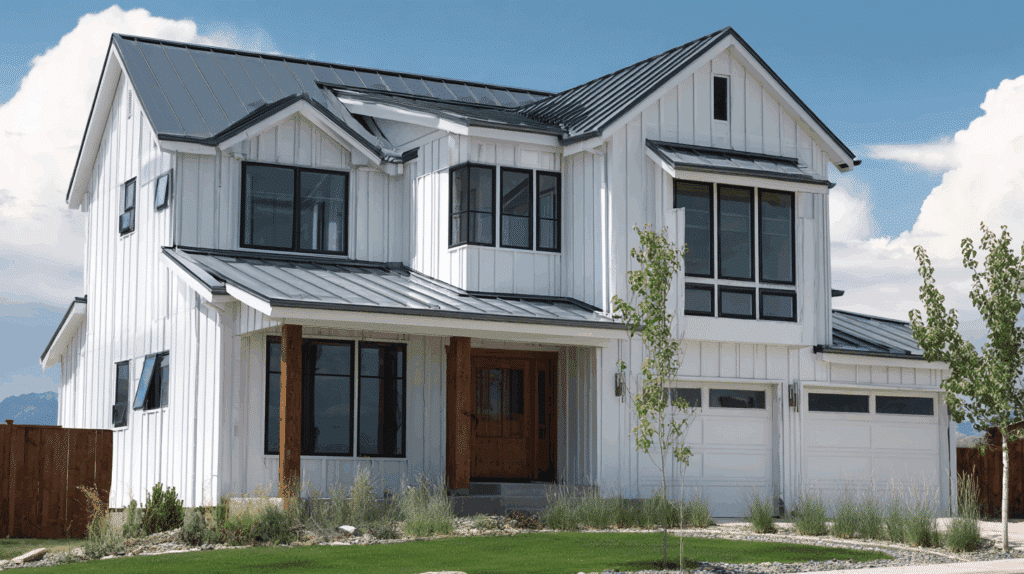
Sleek metal panels that offer a modern, industrial look while providing excellent durability and fire resistance for contemporary home designs.
Available in standing seam or panel styles with various finishes.
Pros:
- Fire-resistant and sleek, with a modern look, won’t rot or attract pests.
- Lightweight aluminum or strong steel options are available.
- Recyclable and energy efficient.
Cons:
- Can dent from hail or impacts.
- Steel may rust if the coating is damaged.
- It can be noisy during rain or hailstorms.
Cost: $4.50-8 per sq. foot (Approx)
Maintenance Tips: Rinse annually to remove salt and debris, and inspect for scratches.
6. Stucco Siding
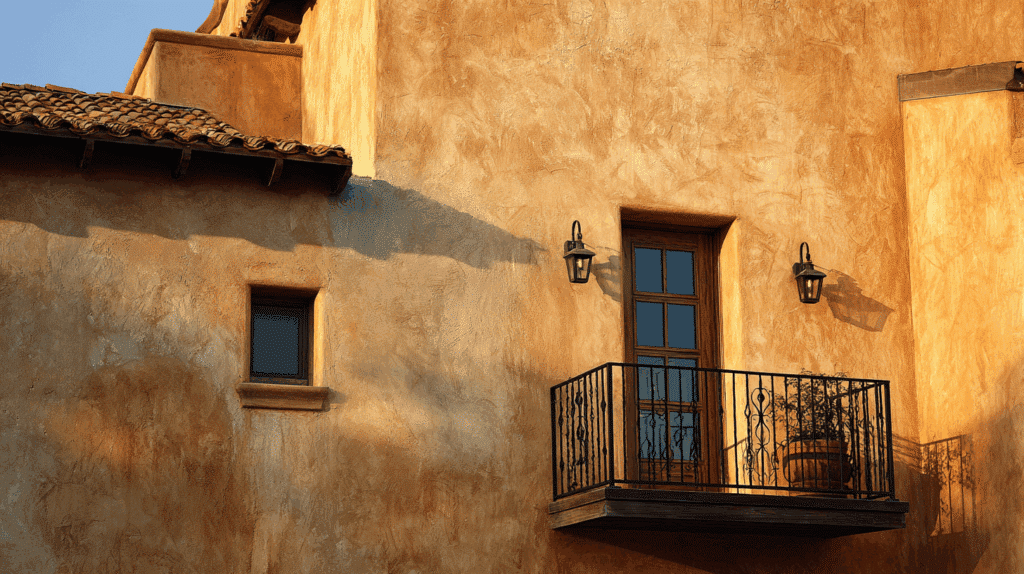
A cement-based exterior finish applied in multiple coats over wire mesh, creating a textured, durable surface that’s been used for centuries in warm, dry climates.
Pros:
- Excellent insulation properties, very durable in dry climates, and fire-resistant.
- It can be textured and painted in any color.
- Seamless appearance.
Cons:
- Prone to cracking in wet climates or areas with ground movement.
- Expensive to repair correctly.
- Not suitable for all climates.
Cost: $3-5.50 per sq. foot (Approx)
Maintenance Tips: Inspect for cracks annually and seal quickly.
7. Brick Siding
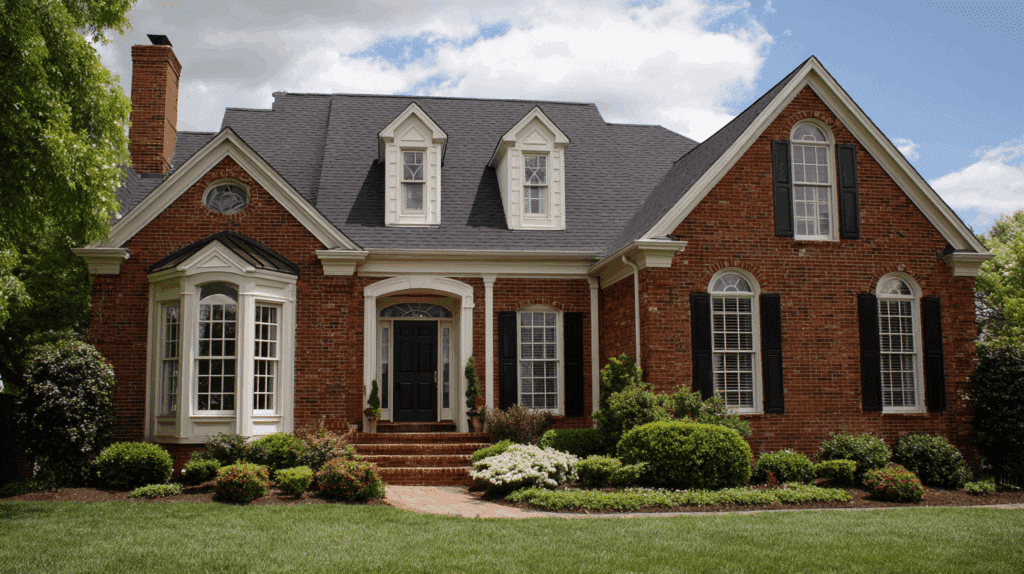
Traditional brick veneer offers timeless appeal and excellent durability.
Unlike structural brick, veneer is a single layer attached to the home’s frame, providing the classic look with modern installation methods.
Pros:
- Timeless appearance that never goes out of style.
- Minimal maintenance required.
- Excellent insulation and fire resistance.
Cons:
- Very expensive upfront and heavy, requiring a firm foundation support.
- Limited color options and difficult to modify.
Cost: $7-12 per sq. foot (Approx)
Maintenance Tips: Clean occasionally and check mortar joints every few years.
8. Stone Veneer
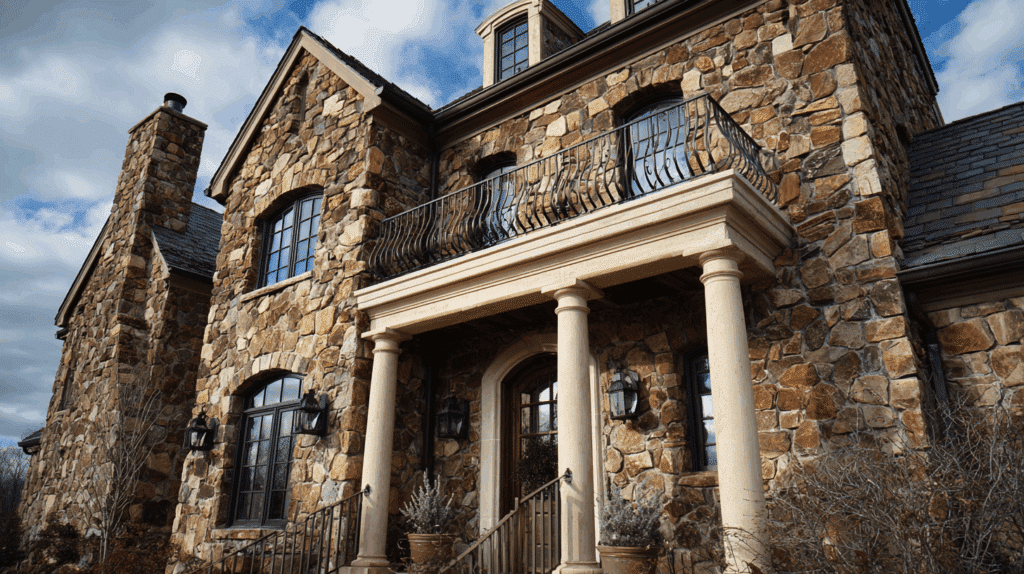
Natural stone or manufactured stone veneer provides the ultimate in luxury appearance and durability.
Available in various types, from fieldstone to cultured stone that mimics natural materials.
Pros:
- Unmatched beauty and prestige.
- Extremely durable and weather-resistant.
- Natural stone lasts indefinitely with minimal care.
Cons:
- Very expensive and requires skilled installation.
- Heavyweight needs structural support.
- Limited repair options.
Cost: $8-18 per sq. foot (natural), $5-10 per sq. foot (veneer) (Approx)
Maintenance Tips: Clean occasionally and check mortar joints every few years.
9. Composite or Polymer Siding
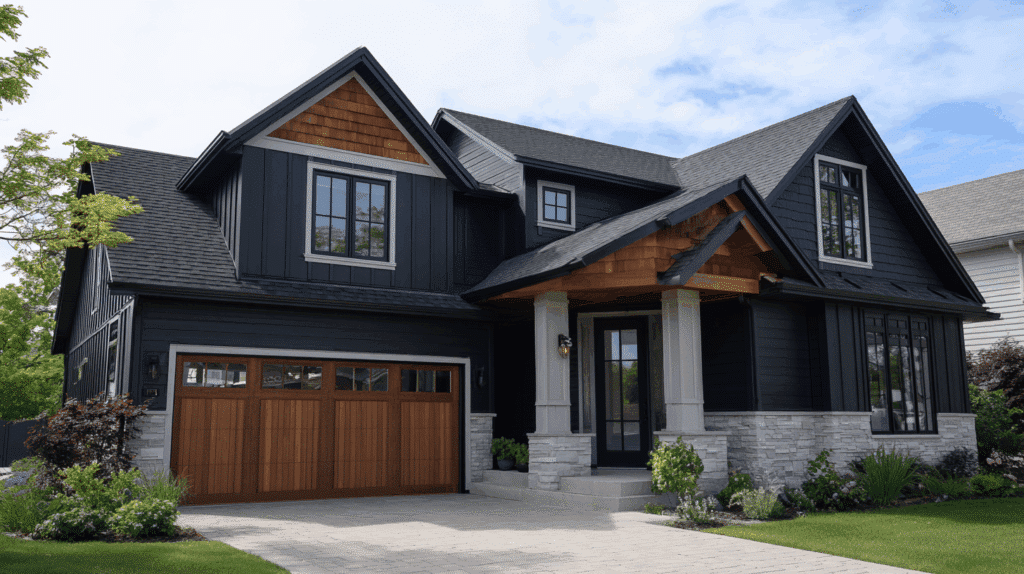
Advanced engineered materials that combine plastic polymers with wood fibers or other materials to create siding that mimics natural materials while offering superior performance and longevity.
Pros:
- Realistic wood or stone appearance without the maintenance.
- Resistant to mold, fading, and warping.
- Won’t rot or attract insects.
Cons:
- More expensive than vinyl, but still looks somewhat artificial up close.
- Limited repair options if damaged.
Cost: $4.50-8 per sq. foot (Approx)
Maintenance Tips: Clean with soap and water annually – no painting needed
10. Concrete or Precast Siding
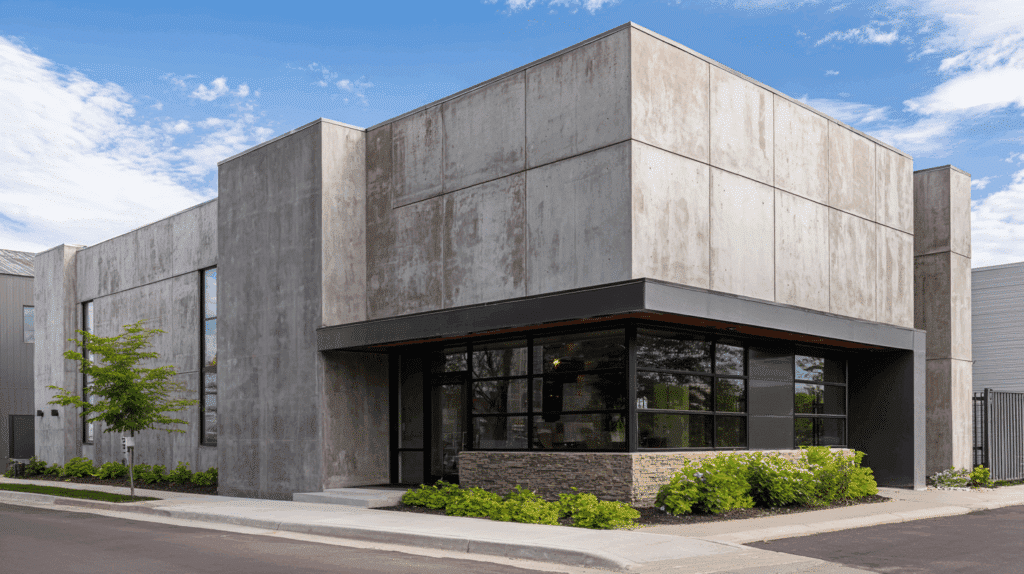
Modern concrete panels offer ultra-contemporary aesthetics with unmatched durability. Popular in commercial and high-end residential construction for their clean, minimalist appearance.
Pros:
- Extremely durable and fire-resistant.
- Modern architectural appeal.
- Excellent insulation properties.
- Can be textured or colored.
Cons:
- Very expensive and requires professional installation.
- Heavyweight needs structural support.
- Limited style flexibility.
Cost: $9-15 per sq. foot (Approx)
Maintenance Tips: Pressure wash yearly and check the sealant around panels
11. Aluminum Clapboard Siding
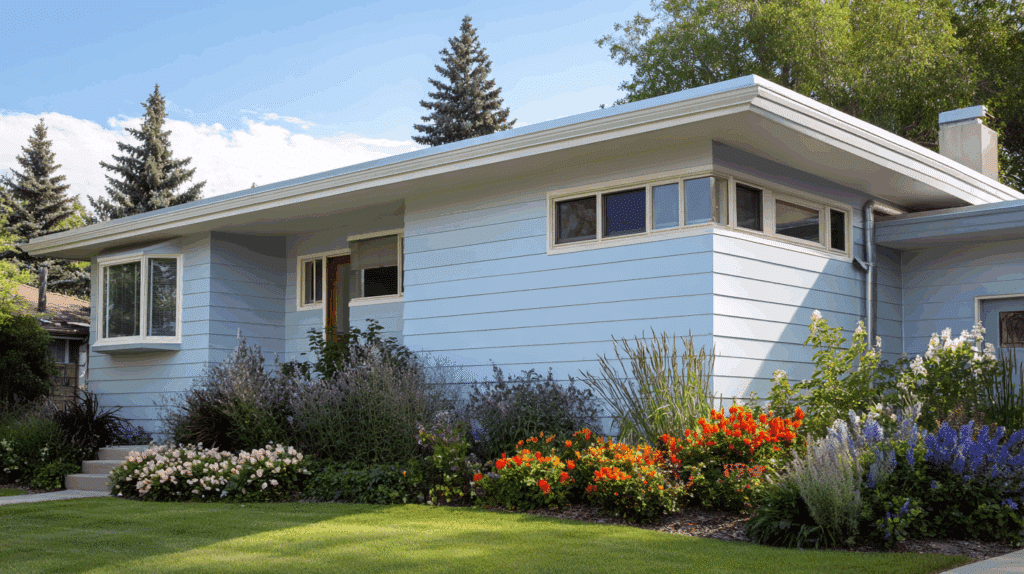
Classic aluminum siding that mimics traditional wood clapboard design while offering the durability and low-maintenance benefits of metal.
Popular in mid-century homes and still chosen today for its retro appeal and practical advantages.
Pros:
- Lightweight and rust-resistant.
- Never needs painting if factory-finished.
- Fire resistant and won’t attract pests.
- Easy to repair individual sections if damaged.
Cons:
- Can dent easily from hail or impacts.
- Limited color options compared to vinyl.
- It may look dated in some architectural styles.
Cost: $3-6 per sq. foot (Approx)
Maintenance Tips: Wash yearly with gentle soap and check for dents
Wrapping Up
Choosing the right types of siding for homes is one of the most critical decisions as it affects comfort, appearance, and property value for decades.
If you want affordable vinyl, natural wood beauty, or durable fiber cement, match your choice to your budget, climate, and lifestyle needs.
The cheapest upfront option isn’t always the most economical in the long term, so consider maintenance requirements and how long you plan to stay in your home.
Today’s siding options offer something for everyone, from low-maintenance materials perfect for busy families to luxurious options that boost curb appeal.
Frequently Asked Questions (FAQs)
What’s the Best Siding for Extreme Weather?
Fiber cement siding performs best in extreme weather conditions. It won’t burn, rot, or attract pests, and handles harsh weather beautifully. Metal siding is also ideal for fire-prone areas and coastal regions with high salt air exposure, making it a suitable choice for your homes.
Which Siding Adds the Most Home Value?
Brick and stone siding add the most value to your home, often significantly increasing property value. Fiber cement also provides a good return on investment. Vinyl siding, while functional, typically doesn’t add much resale value.
Which Siding is Most Eco-Friendly?
Wood siding is the most environmentally friendly when sourced from sustainable forests. Metal siding is highly recyclable. Composite siding often uses recycled materials. Avoid vinyl if environmental impact is a primary concern.

